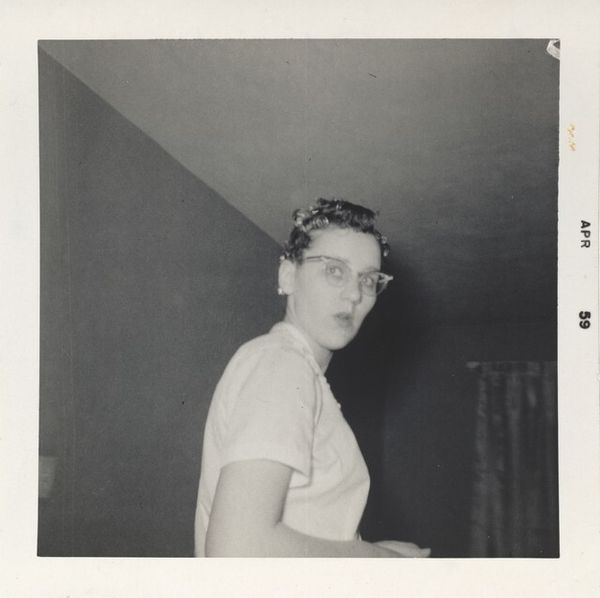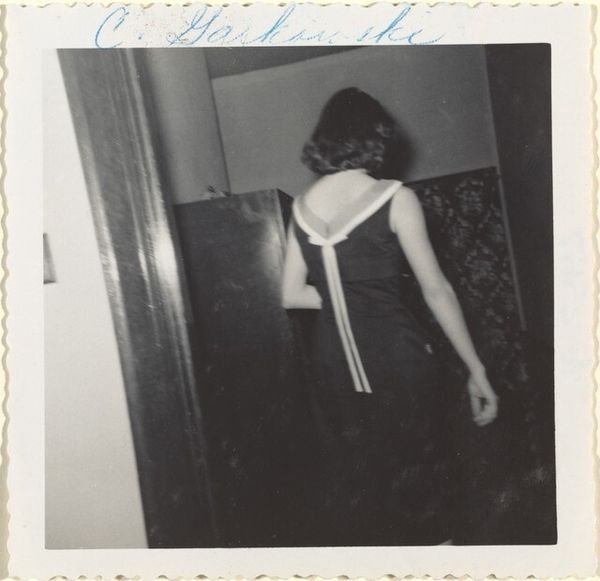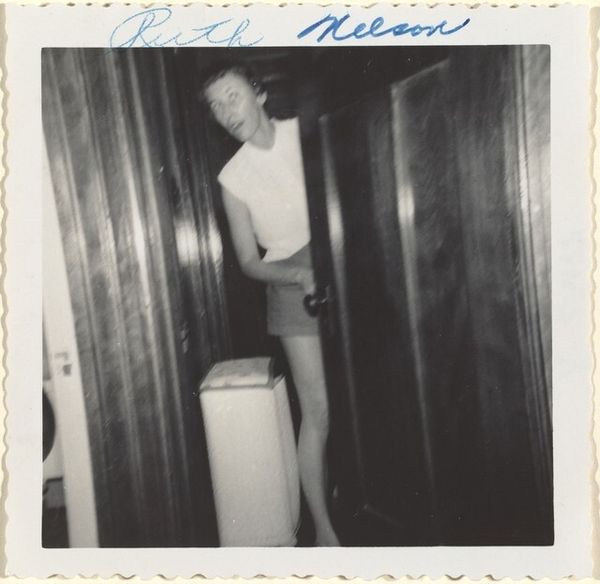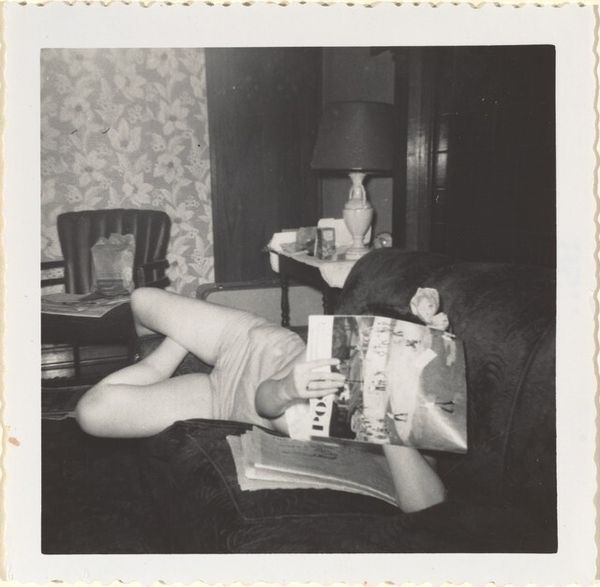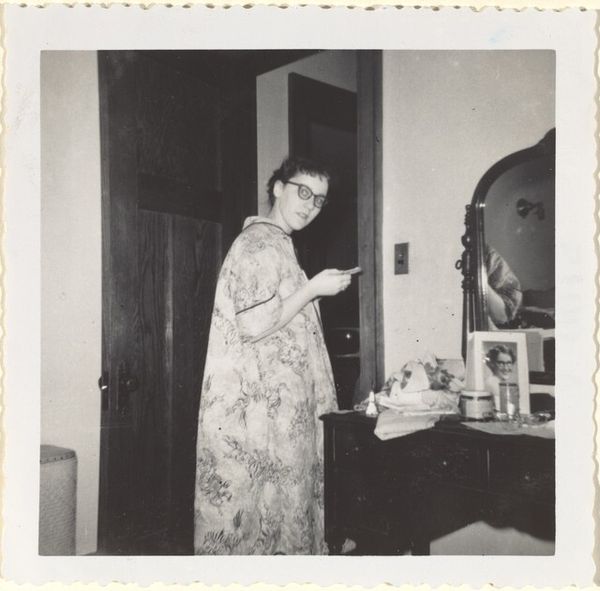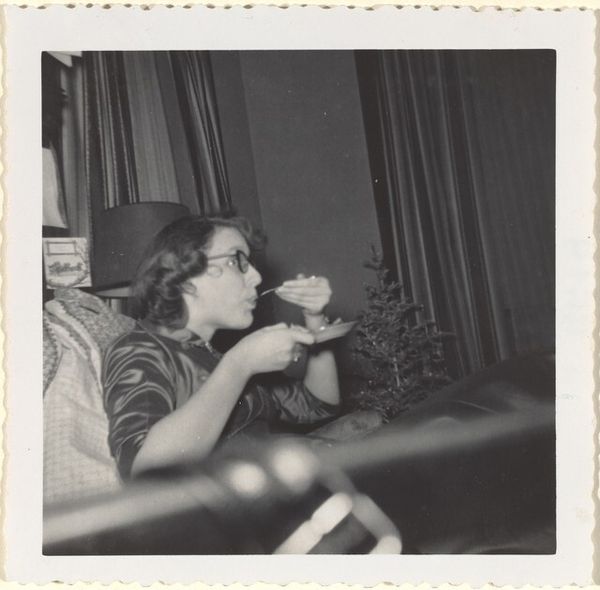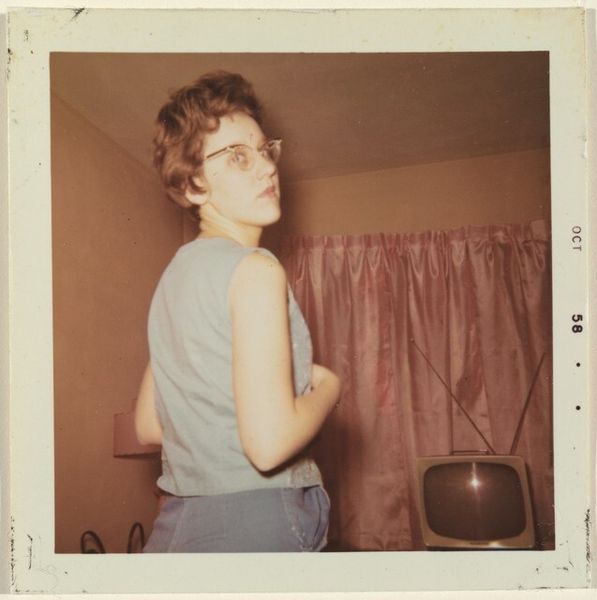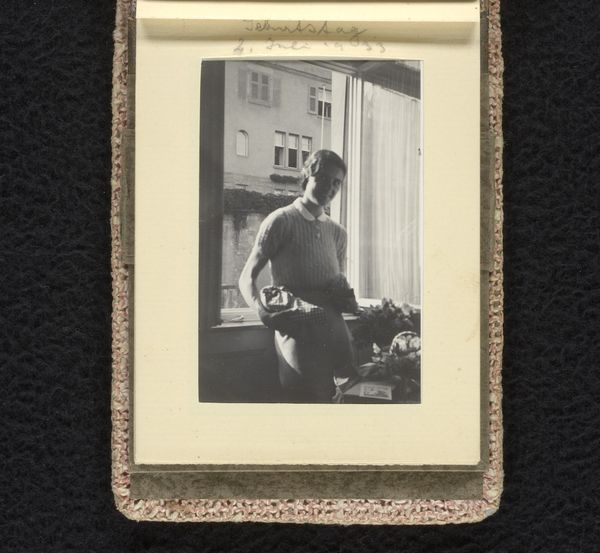
photography, gelatin-silver-print
#
portrait
#
print photography
#
still-life-photography
#
street-photography
#
photography
#
historical photography
#
gelatin-silver-print
#
realism
Dimensions: image: 7.6 x 7.8 cm (3 x 3 1/16 in.) sheet: 8.8 x 9 cm (3 7/16 x 3 9/16 in.)
Copyright: National Gallery of Art: CC0 1.0
Curator: This photograph, entitled "Untitled (Rooming house)," is believed to have been taken in the late 1950s, and the artist remains anonymous. It's a gelatin-silver print, a common medium for capturing everyday life at the time. What's your immediate reaction? Editor: There's a sense of profound unease here, almost voyeuristic. The stark, grainy texture, the cramped space. It feels as if we are peering into a life we shouldn't be seeing. Is this a portrait of desperation, do you think? Curator: I think "desperation" might be a strong word without more context. Considering the late 1950s, the postwar era in America, the image evokes complex themes. I am looking into gender roles and social restrictions. The anonymous woman in the photograph could represent the silent struggles of women within limited domestic spaces. The "rooming house" in the title subtly alludes to issues of class and transience. Editor: That’s a good point about gender roles and class, but look at her glasses, the plainness of her clothes, even the way she's awkwardly positioned in the frame, slightly off-center. I can’t help feeling her body language symbolizes isolation, almost invisibility, as if she is vanishing into the darkness of that room. There's a distinct lack of embellishment; even the trim surrounding the picture suggests fragility, impermanence. Curator: True. And consider the composition again: The contrast between the starkly lit figure and the heavy shadows creates a strong visual dichotomy. The darkness to her left might symbolize an uncertain future or social constraints. It would be fascinating to know her story or the symbolism in such portraits. Editor: Indeed, symbols! This is the cultural memory embodied, isn’t it? Think of the closed door framing the subject! It could suggest exclusion. And those vertical stripes on the curtain! It speaks of restriction, like prison bars… Don’t you find this photograph extremely troubling? Curator: Perhaps…it’s certainly powerful in its subtlety. It’s a quiet scream, isn’t it? Bringing to the surface discussions on marginalized experiences. The photograph pushes viewers to confront issues of social justice. Editor: This dialogue highlights why studying such images matters. Looking at the world through photographic lenses reveals how social roles have molded perceptions for both good and ill. Curator: Precisely. A look at a simple portrait turns into an assessment of social confines and possible paths toward equity and freedom. It pushes you to observe what is apparent while thinking critically on its broader implications.
Comments
No comments
Be the first to comment and join the conversation on the ultimate creative platform.

